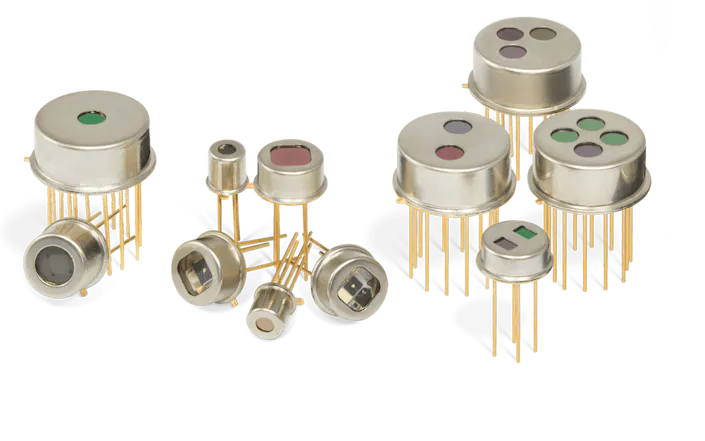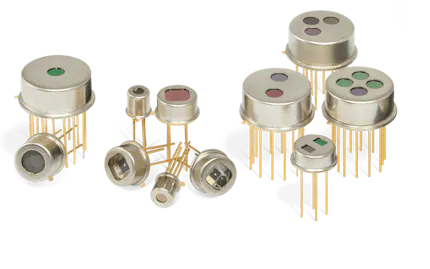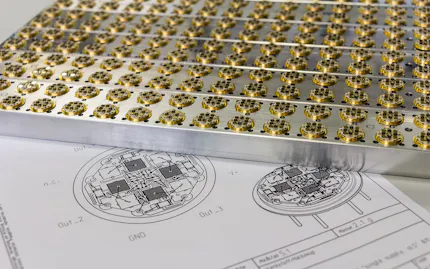Interference Filter
Interference filters are components, which can be specified well for this filter capacity.
The wavelength selectivity of an interference filter is generated by elimination in numerous thin dielectric layers (often lambda/4-layers). Common designs are the bandpass, longpass and antireflection coating. Typical characteristics of an in interference filter are the transmission, central shaft length, bandwidth and blocking.

Interference Filters for Gas Analysis and Flame Detection
Gas analysis identifies and quantifies the components of gas mixtures. It uses narrow-band (100 ... 200 nm bandwidth) interference filters (narrow band pass – NBP). Flame sensor technology uses wider band passes (band pass – BP; bandwidth up to 600 nm) than the gas analysis, to induce higher signal voltages when measuring flames from greater distances, with the compromise of losing selectivity. Analytic measuring procedures use external optical elements for spectral selection. These infrared detectors are often equipped with a crystal window, for instance a potassium bromide window. Alternatively, the application of significantly more environmentally resistant silicon- and germanium substrate is possible. However, they have to be furnished with an antireflection coating (ARC) on both sides.

Would You Like to Know More?
It is not unusual for tasks to be associated with special requirements. Discuss your specific application needs with our experienced engineers, receive further technical information or learn more about our additional services.
Wide-Ranging Applications of Interference Filters
Contact-free temperature measuring (pyrometry) commonly uses the so-called first 3 … 5 µm and second 8 … 14 µm atmospheric windows for their spectral range, since environmental impacts, such as atmospheric water vapour, can lead to signal attenuation and therefore to measuring errors, especially at longer measuring distances. Interference filters in bandpass-design with a width of several micrometers (wide band pass – WBP) are generally used.
Detector Search
InfraTec offers different product groups including approximately 50 standard pyroelectric detectors. Detectors with reduced microphone technology and integrated operational amplifier as well as digital detectors are part of our product range.
Choose your suitable infrared detectors with the help of our detailed detector search.



